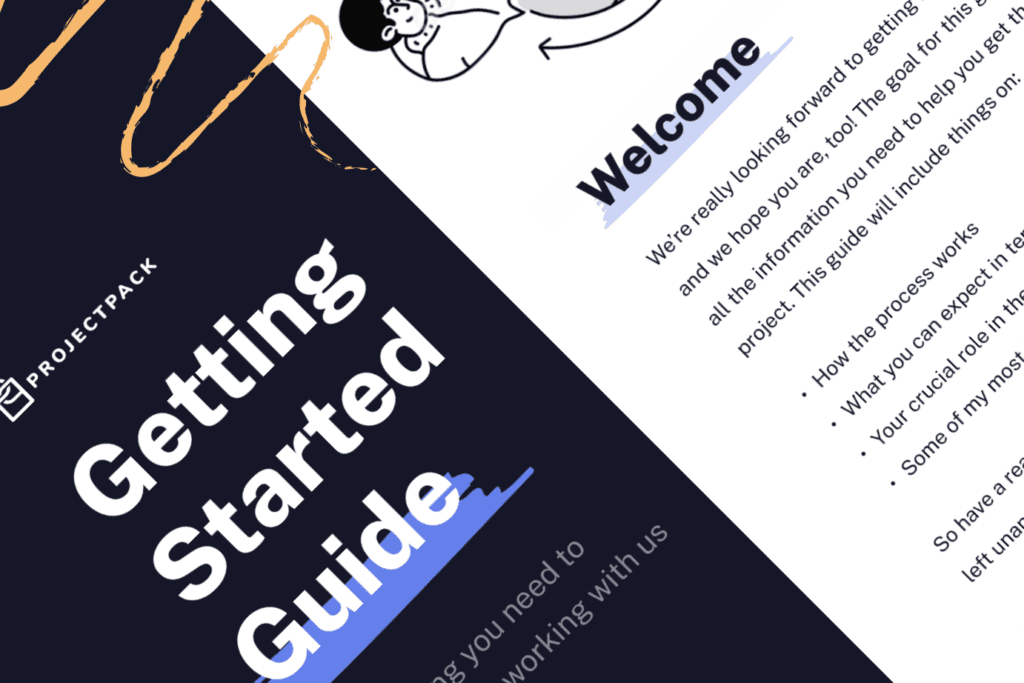When it comes to high-value client projects, getting the documents and deliverables right is crucial. You don’t want to go overboard with too much information (and you don’t want to include fluff documents), but you do need to give your client everything they need to trust that you’ve got this.
High-value projects are often fairly custom. So deliverables might not always be the same for every client. But there are a handful of documents that should be included in every project.
In this article, I’m going to go through ten (plus one extra bonus) of the most crucial documents that you need in your service business.
These documents will not only make everything smooth sailing for you and your clients, but they’ll also prevent scope creep, help you collect marketing assets (like testimonials), and provide opportunities for some extra revenue.
So with that in mind, here are my top documents that every service business owner working on high-value projects should have in their arsenal:
1) Intake Questionnaire
An intake questionnaire is a series of questions you will ask your clients to ensure you have all the information you need for the project.
You can use your intake questionnaire to pre-qualify your client (make sure they’re a good fit for you) and to gather any project-specific information that you might need.
But not only that, a good intake questionnaire should also provide some insight to you as the business owner into how your client found out about you, and what led them to hire you over anyone else.
This kind of information is invaluable, and the more touch points you can create to gain these kinds of insights will pay dividends throughout the life of your business.
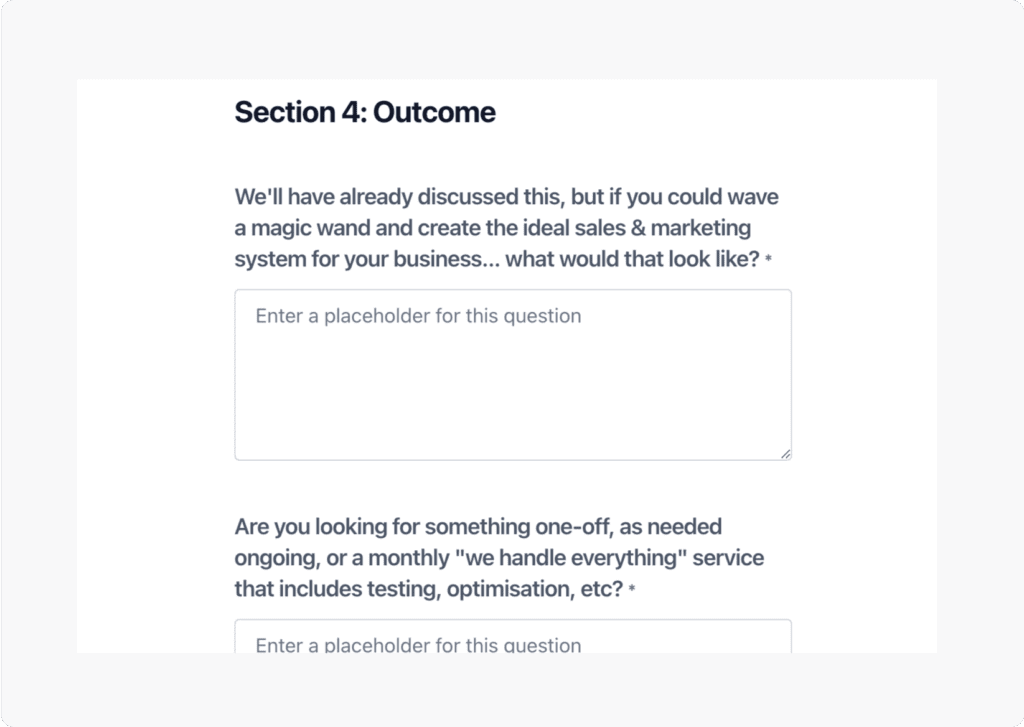
2) Project Brief
Every project should have a short project brief – ideally written by you and signed off by your clients – to summarize the goal of the project, along with the expected deliverables and outcomes.
It’s important that you as the service provider write this brief (even if your client has already provided one) because you want to make sure that you understand the project fully and that both you and your client are on the same page.
Often your client will make tweaks to the brief and fill in any gaps that hadn’t come up during the intake process. The aim is to reduce the risk of any crossed wires, or incorrect assumptions that could be costly down the line.
3) ‘Before we begin’ Checklist
There are always going to be things that you need from your client before starting a project. Things like the completed intake questionnaire, login information, brand assets, research, and so on.
It’s best to collect everything you need in one go at the start so you can hit the ground running and so you’re not bombarding your client with requests throughout the project (which can end up delaying the whole thing). A simple checklist will take a few minutes to put together but is invaluable.
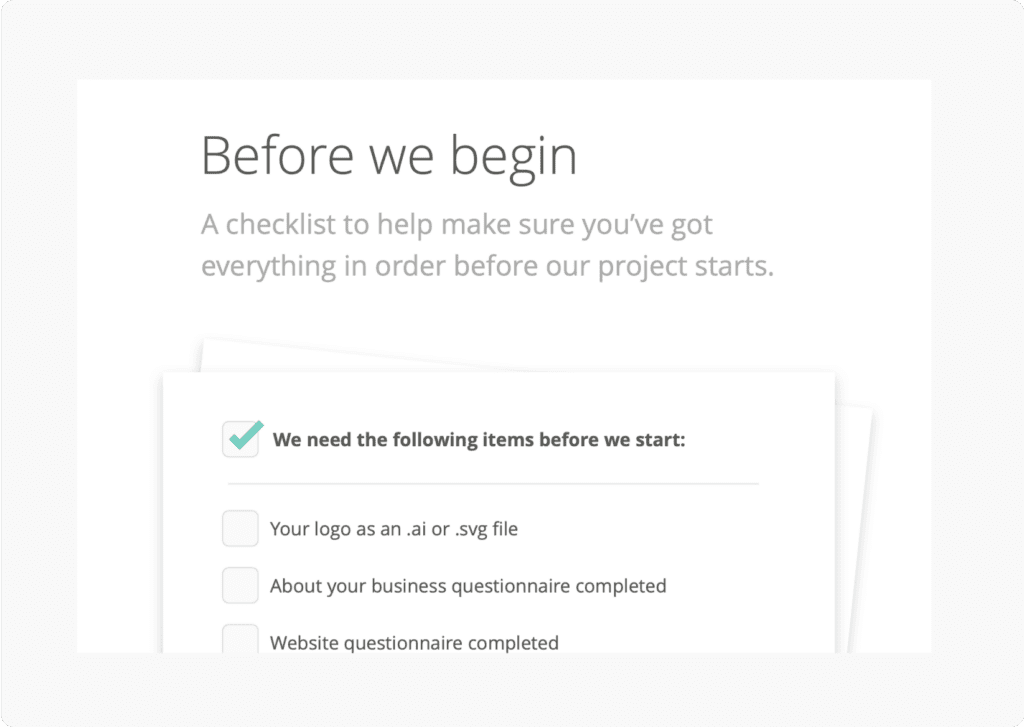
4) Meeting Agenda
Meetings are inevitable in most service businesses.
(Ugh, I know).
But having a clear meeting agenda template will ensure that no meeting is wasted. Both you and your clients will know the goal of the meeting, along with any talking points or questions.
You can keep meetings lean with accurate timestamps so you’ll never find yourself going over the allocated time.
Then, after the meeting, you will both have a copy of any meeting notes and action points to reference.
5) Proposal
For custom projects, proposals are necessary. You can’t always know the cost of a project until you’ve gone through the requirements and laid them out.
But even if you’re doing fixed-scope projects – and the only thing you change between clients is the name on the front – having a clear proposal that you can send is still a good idea.
Not only will your client know exactly what to expect, but it also gives you the opportunity to include any add-on or related services that your client may want to consider. Never underestimate the value of an upsell!
6) Contract
Contracts are a vital part of your service business. But they don’t need to be overly complex or scary. Having a solid contract shows that you’re a professional who is committed to protecting both your and your client’s best interests.
7) Statement of Work
A statement of work is a document that outlines every project deliverable, along with payment terms, and timelines. You would typically send this alongside your contract to be referenced throughout.
A statement of work is a short but useful document for both yourself and your client that helps keep the project on track and prevent any kind of scope creep.
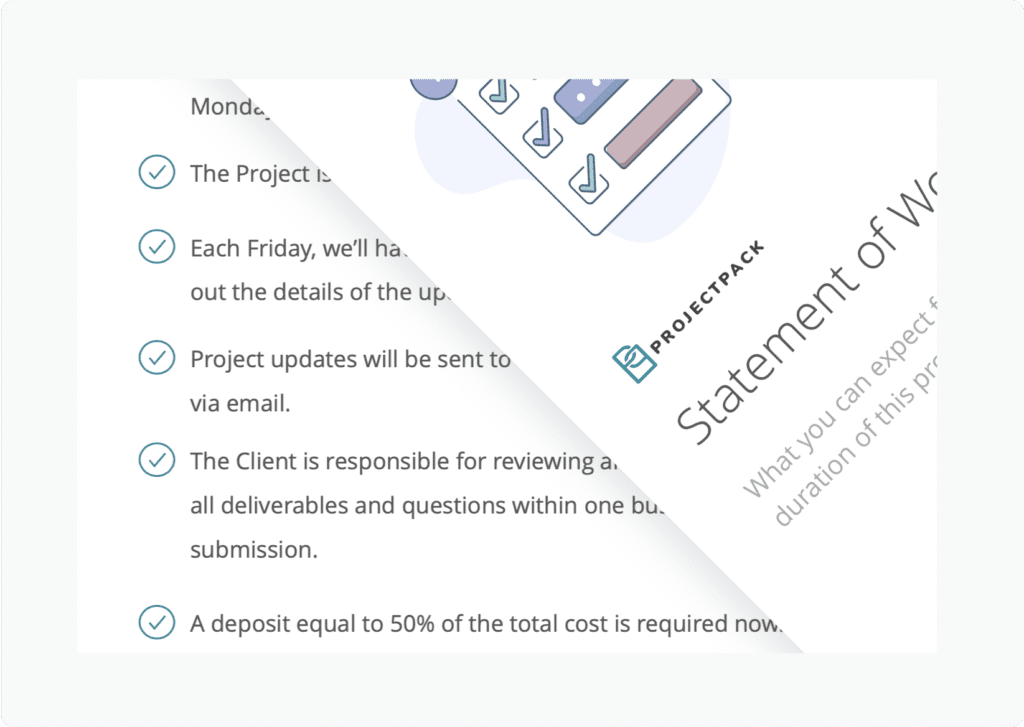
8) Getting Started Guide
A getting started guide is a welcome document that you send to your client after the deposit has been paid.
It gives them all the information they might need about your company and what to expect. It can include things like frequently asked questions, what the client can expect of you, and what you expect of your client. You can also include information about complimentary services you offer, along with things like your referral program (if you have one).
9) Process Chart
A process chart can be included in your getting started guide but we recommend having it somewhere separate also.
A process chart outlines every step of the project along with who is responsible for each deliverable.
Remember, even if your client has worked on this kind of project before, they may not have worked with you before so the process might be different to what they are used to.
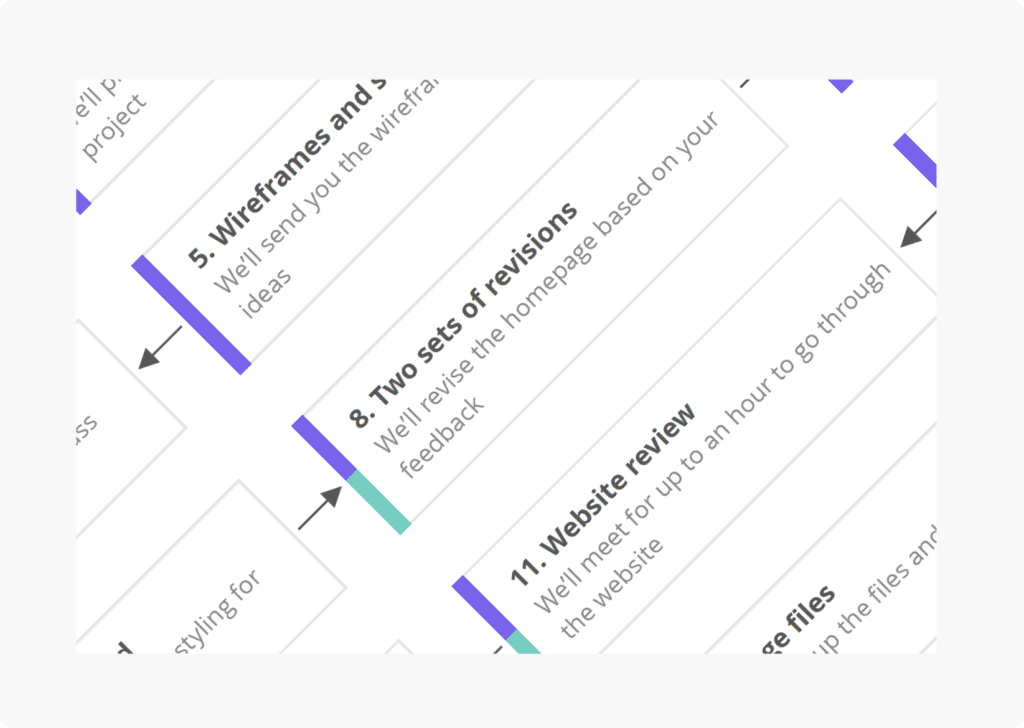
10) Offboarding Questionnaire
An offboarding questionnaire is often overlooked by service providers. But it’s a really valuable one for you as the business owner.
This would include any questions that could lead to a decent case study or testimonial, along with insights into other needs your client has that could potentially turn into future work for you.
You don’t have to send your offboarding questionnaire at the end of the project. You can send it at any time (or even send more than one) to collect relevant information and testimonials throughout.
You can also send these on autopilot with a simple email nurturing sequence in your email service provider (ESP).
Ultimately, you’re trying to create as many different touchpoints for you to collect data, research, testimonials, and feedback as possible. All of these things are necessary if you want to grow your service business using something other than luck.
11) BONUS: Services Guide
An extra document that you can include is a services guide for your clients.
This would include a list of all the different services you offer, what’s included, and ideally the cost to your client.
The idea behind this would be to use it as an upsell either during the project, or shortly after.
Remember, clients who have already paid you money are much more likely to pay you more – especially when they’ve seen first-hand how great you are to work with.
Putting these documents and templates together
These documents can take some time to put together. But remember you don’t need to do it all at once. If you dedicated an hour or two to create just one per month, you’d have the whole set in less than a year.
However, most agency owners don’t want to wait that long – or even spend the limited time they have putting these documents together.
If that’s you, you might want to check out Client Portal's sister company, Project Pack. We're working on a big update that will give you all of the above, and more, for less than the price of a dinner out for 2.
